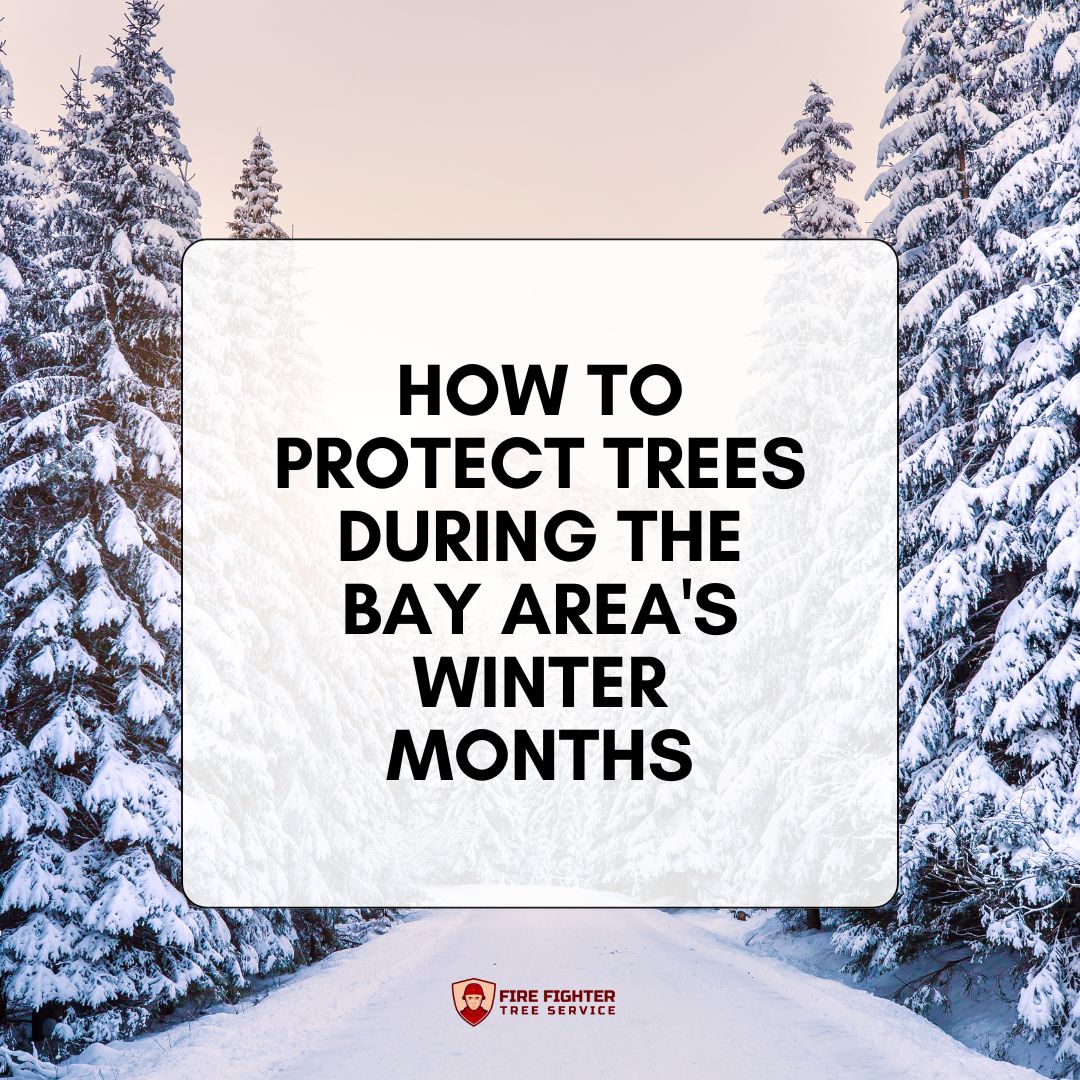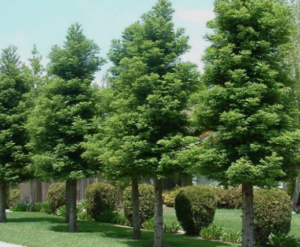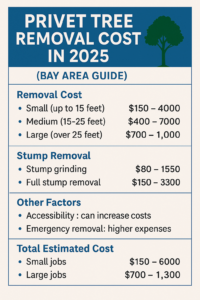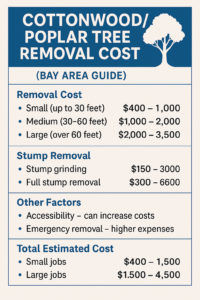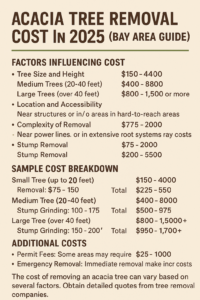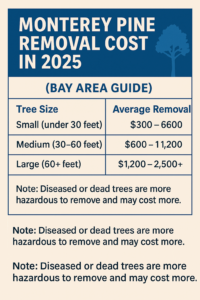The Bay Area’s winter months may be mild, but that doesn’t make them tree-friendly. Quite the contrary, conditions like heavy rains, occasional floods, and windstorms threaten tree life and are often to blame for tree damage and uprooting. Hence, there’s an urgent need to protect trees during winter.
Part of the protection includes timely pruning, improving drainage, and adding mulch to the base of the trees. This guide will explain what to do in each case. Plus, we’ll look at common winter tree care mistakes you must avoid when caring for trees in the Bay Area.
Table of Contents
- Understanding Bay Area Winter Conditions
- Steps to Protect Trees During Winter
- Common Winter Tree Care Mistakes to Avoid
- Conclusion
Understanding Bay Area Winter Conditions
Bay Area winter tree care is necessary because of these adverse conditions:
1. Heavy Rains

With the winter comes heavy downpours. As beneficial as water is for trees, too much of it can be unfavorable. It often leads to soil erosion. Too much rainfall erodes the soil around the tree bases, destabilizing them. Since the trees are less anchored because of insufficient soil around the roots, they are more likely to fall, particularly those on hilly terrains.
Another reason to protect trees during winter rainstorms is that heavy rains lead to oversaturation of water around the tree base. The water displaces oxygen in the root area, weakening the roots and causing them to rot.
2. Occasional Flooding
Though it doesn’t happen often, sometimes it floods in the Bay Area following heavy downpours.
When it does, trees suffer from overexposure to waterlogged conditions, which causes root instability. The standing water from the heavy downpour slowly loosens the soil around the tree base and interferes with its integrity. That makes the roots unstable and inadequate to support the trees properly.
Roots need a proper air supply to breathe and allow the trees to thrive. Waterlogged soil deprives the roots of oxygen, which suffocates them and may lead to tree death.
3. Windstorms
Windstorms are a winter hazard in the Bay Area. Windstorms break diseased, weak, and dead tree branches because they aren’t strong enough to withstand their impact. Once these branches snap, they could fall on people or structures, thus a safety concern.
Apart from that, trees weakened by flooding or drought conditions and those with shallow roots become targets for windstorms. Strong wind gusts could quickly shake them off their ground anchorage.
Steps to Protect Trees During Winter
Below are three key steps to protecting trees during winter:

Prune Dead or Weak Branches
Pruning improves trees’ structural integrity, enabling them to withstand winter stress. It allows you to remove weak, diseased, and dead branches likely to snap in high winds. Removing these branches also reduces the trees’ overall load and susceptibility to damage in the winter.
Branch trimming, like canopy thinning, makes it easy for a strong wind to blow past the branches without breaking them or forcefully bringing the tree down. Pruning also encourages more vigorous regrowth and healthier branches with a robust structure that is more resistant to rainstorms.
Here are some topwinter pruning tips for best results:
- Target the dormant period (late fall or early spring) when the risk of tree infection and stress is low
- Focus first on diseased and dead branches
- Don’t over prune
- Use appropriate pruning tools
Improve Drainage Around Trees
Good drainage is key to preventing root rot and uprooting during winter. Here are essential tree drainage solutions and tips to use:
- Soil aeration: Use the garden fork or any other suitable tool to break the compact soil around the trees. This encourages water absorption deep into the soil and discourages puddles from forming on the surface, which could oversaturate the tree roots.
- Appropriate drainage system: Consider options like French drains and berms, which effectively redirect water away from the roots. A dry well can also prevent waterlogging by offering temporary storage for the standing water and stopping it from pooling around the tree base.
- Soil elevation: If you live in a flood-prone area, consider raising the soil around the tree by a few layers to improve drainage. Mulch (which we will explain next) may also help add that extra layer and slow down erosion.
Add Mulch to Tree Bases
Mulching is one of the best root protection tips for the winter. It’s a natural insulator that stops temperature fluctuations around the soil and roots and retains moisture, thus protecting the roots from damage.
Mulch also shields the soil around the roots from the impact of the heavy downpour, which can erode the topsoil and leave the roots with less anchorage. Furthermore, organic mulch encourages microbial activity, which improves soil structure and water infiltration.
Here are essential tips for winter tree mulching:
- Consider organic mulch such as hay, wood chips, and leaves
- Apply it thick (2-4 inches)
- Keep a few inches from the tree trunk to discourage fungal attack and trunk rot.
Common Winter Tree Care Mistakes to Avoid
Below are the most typical winter tree care mistakes Bay Area and solutions:

1. Pre-dormancy Pruning
Pruning too early, perhaps before fall or post-spring, isn’t the best idea. Doing so will encourage fast regrowths, which could be susceptible to first damage when the winter kicks in.
Advice: Schedule the pruning between late fall and early spring. That’s when the trees are dormant and are thus less stressed.
2. Over Pruning
Ideally, you shouldn’t prune more than one-quarter of the trees in one season. That’s over-pruning. Its danger is that it weakens the tree structure, rendering it susceptible to pest attacks and diseases.
Advice: Don’t prune more than 25% of the branches.
3. Pruning in Freezing or Wet Conditions
Freezing conditions can damage tree branches needlessly, while wet conditions increase the risk of diseases. Hence, pruning your trees in either condition is not a good idea.
Advice: Consider pruning your trees when the days are dry and mild.
4. Wrong Timing for Sensitive Species
While fruit trees are best pruned during their dormancy period, species like oak and pine are more sensitive to trimming in the winter. Pruning them at the onset of winter may expose them to diseases.
Advice: Consider pruning oaks and pines during the late winter
5. Pruning for Shape Instead of for Health
Don’t focus too much on the aesthetic when starting to trim trees. Pruning to shape may weaken the tree’s structure, as you may remove healthy branches and be left with diseased ones.
Advice: First, focus on dead and diseased branches.
6. Trimming Too Far or Too Close from the Branch Collar
The branch collar is the slightly bulging part between branches or between a branch and trunk. You should cut slightly outside this point. If you cut too close to the collar, you could damage the tree, and it may take long to heal. And if you cut too far away from the collar, it means leaving behind a vast stub that could rot.
Advice: Make a clean cut just a few inches from the branch collar. If unsure, ask an expert arborist for help, who can also share more about winter tree care maintenance tips.
7. Using Unclean or Blunt Tools
Dirty and unsharpened tools result in ragged cuts which take longer to heal. Plus, they may serve as entryways for tree diseases.
Advice: Clean and regularly sharpen your pruning tools before use
Conclusion
With winter bringing heavy downpours, occasional flooding, and windstorms, trees need protection to grow strong and healthy. Consequently, pruning, drainage, mulching, and other tree care practices are necessary.
If you want an expert to help care for your trees, think no further than Fire Fighter Tress Services. Our certified arborists and tree specialists understand how to protect trees during winter in the Bay Area.
